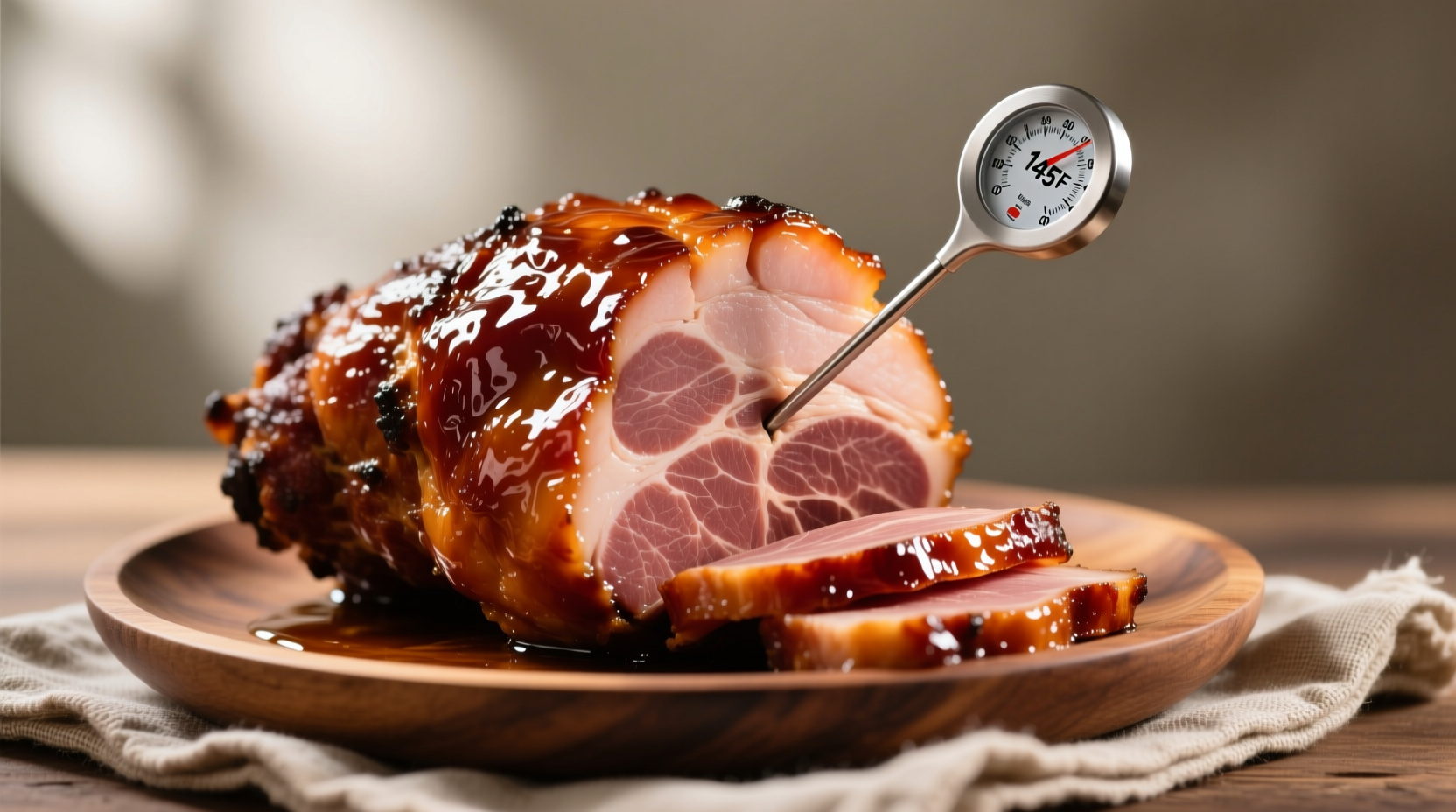Understanding Your Smoked Ham: What You Need to Know First
Before you start cooking, recognize that "smoked ham" means it's fully cooked through curing and smoking processes. This isn't raw meat requiring full cooking—it's about reheating to ideal serving temperature without drying it out. Many home cooks make the critical mistake of treating smoked ham like raw pork, leading to tough, dry results.
According to the USDA Food Safety and Inspection Service, properly smoked ham reaches safe internal temperatures (145°F+) during processing. Your kitchen task is simply bringing it to 140°F for optimal texture and food safety when serving.
| Ham Type | Internal Temp Goal | Reheating Time (per lb) | Critical Note |
|---|---|---|---|
| Bone-in whole ham | 140°F | 10-15 min | Place flat side down to retain juices |
| Spiral-cut ham | 140°F | 8-10 min | Wrap individual slices with foil |
| Boneless rolled ham | 140°F | 12-18 min | Unroll before reheating |
Your Pre-Cooking Checklist: Equipment and Prep
Success starts before the oven heats. Gather these essentials:
- Roasting pan with rack (prevents bottom from steaming)
- Meat thermometer (instant-read recommended)
- Aluminum foil (heavy-duty for better heat retention)
- Moisture source (1/2 cup apple juice, broth, or water)
- Glaze ingredients (applied during final 20-30 minutes)
If your ham was frozen, allow 4-5 hours per pound for refrigerator thawing according to FoodSafety.gov. Never thaw ham at room temperature—this creates dangerous bacteria growth zones between 40°F-140°F.
Step-by-Step Reheating Process for Perfect Results
Follow this professional-tested sequence for moist, flavorful ham every time:
- Prep the ham: Remove packaging, rinse surface, and pat dry. For spiral-cut hams, wrap individual slices with small foil pieces.
- Position correctly: Place ham flat-side down in roasting pan (this creates a natural juice reservoir).
- Add moisture: Pour 1/2 cup liquid into pan bottom—never directly on ham surface.
- Seal tightly: Cover completely with heavy-duty foil, crimping edges to create a steam environment.
- Set oven temperature: Preheat to 325°F—higher temperatures cause rapid moisture loss.
- Calculate timing: Allow 10-15 minutes per pound (e.g., 8-lb ham = 80-120 minutes).
- Monitor temperature: Insert thermometer into thickest part without touching bone.
- Glaze at the right moment: Remove foil during final 20-30 minutes, apply glaze every 10 minutes.

Avoiding Common Mistakes: Critical Success Factors
Even experienced cooks make these preventable errors:
- Overheating: Exceeding 140°F internal temperature dries out proteins permanently. Remove ham at 135°F—carryover cooking will reach 140°F.
- Glazing too early: Sugars in glazes burn at temperatures above 265°F—apply only during final third of cooking time.
- Skipping resting time: Let ham rest 15-20 minutes after removal. This allows juices to redistribute.
- Using thin foil: Standard foil tears easily—heavy-duty maintains consistent steam environment.
Context matters significantly with spiral-cut hams. Their exposed surfaces dry out 40% faster than whole hams according to National Pork Board research. For these, reduce reheating time by 20% and apply glaze more frequently in smaller amounts.
Serving and Storage: Maximizing Your Results
Proper finishing ensures your effort pays off:
- Carving technique: For bone-in hams, slice parallel to bone in downward motions. Spiral-cut hams require no carving—simply separate pre-cut slices.
- Serving temperature: Ideal serving range is 130°F-140°F—warmer than room temperature but not hot.
- Leftover storage: Refrigerate within 2 hours. Store in airtight container with 1/4 cup pan juices for moisture retention.
- Reheating leftovers: Use microwave on 50% power with damp paper towel, or oven at 275°F until 130°F internal.
Leftover smoked ham maintains quality for 3-4 days refrigerated or 2 months frozen. Never refreeze previously frozen ham—texture degradation becomes noticeable after second freeze cycle.
Troubleshooting Guide: Fixing Common Issues
Rescue your ham with these professional fixes:
- Dry ham: Slice thin, layer in baking dish with broth, cover tightly, and bake at 250°F for 20 minutes.
- Burnt glaze: Carefully scrape off charred portions, then apply fresh glaze during final 10 minutes of reheating.
- Underheated center: Return to oven at 275°F with foil cover until reaching 140°F—check every 15 minutes.
- Salty taste: Soak slices in milk for 30 minutes before serving, or serve with sweet accompaniments like pineapple.
Remember that different ham varieties respond uniquely to reheating. Country hams require soaking before reheating, while city hams (most common supermarket variety) work with the methods described here. Always check your package labeling for specific preparation instructions from the producer.











 浙公网安备
33010002000092号
浙公网安备
33010002000092号 浙B2-20120091-4
浙B2-20120091-4